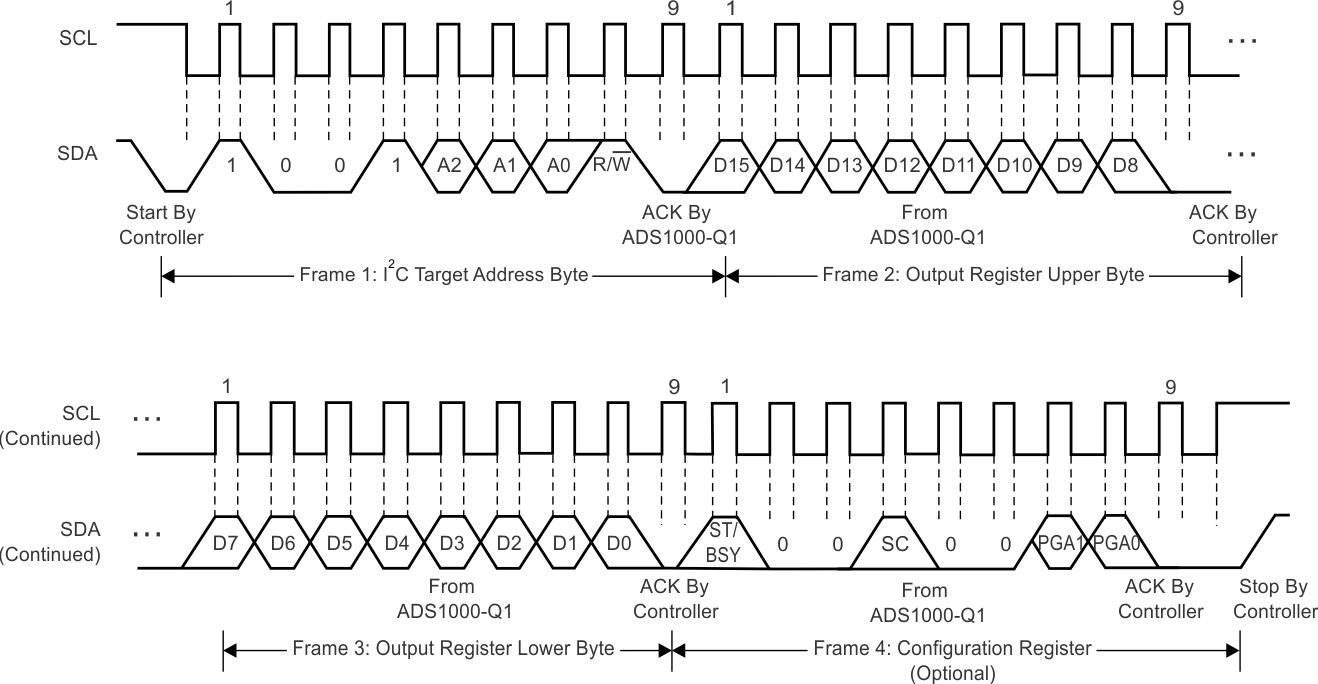SBAS480C september 2009 – june 2023 ADS1000-Q1
PRODUCTION DATA
- 1
- 1 Features
- 2 Applications
- 3 Description
- 4 Revision History
- 5 Pin Configuration and Functions
- 6 Specifications
- 7 Detailed Description
- 8 Application and Implementation
- 9 Device and Documentation Support
- 10Mechanical, Packaging, and Orderable Information
Package Options
Mechanical Data (Package|Pins)
- DBV|6
Thermal pad, mechanical data (Package|Pins)
Orderable Information
7.6.3 Reading From the ADS1000-Q1
The output register and the contents of the configuration register can be read from the ADS1000-Q1. To read data, address the ADS1000-Q1 for reading, and read three bytes from the device. The first two bytes are the output register contents; the third byte is the configuration register contents.
Three bytes do not always have to read from the ADS1000-Q1. If only the contents of the output register are needed, read only two bytes.
Reading more than three bytes from the ADS1000-Q1 has no effect. All bytes beginning with the fourth byte are FFh. Figure 7-3 shows a timing diagram of an ADS1000-Q1 read operation.
 Figure 7-3 Timing Diagram
for Reading from the ADS1000-Q1
Figure 7-3 Timing Diagram
for Reading from the ADS1000-Q1